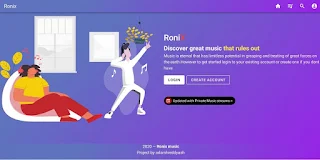We rocked in our previous posts, where we successfully built a backend for our music streaming app using Django, Django rest framework and enhanced security using JWT. In this, we will be using vuejs to build a beautiful frontend for our music API. However, this tutorial should work for any backend you built. Let's not make this posting boring with traditional UI instead, let's try to make our music streaming app look professional. we will be using vuetify for this, a material design UI framework for vuejs.
Let's get started
Let's create our homepage so that the user can register and login.
Now we handle our user state using vuex
Let's add beautiful navbar in views/App.vue
Let's create a signup vue in views
Now create our songs component in Components
However, this needs lots of improvement like building up a music player instead of a native media player, playlist etc.. Stay connected with this blog we will make updates.
Finally, let's make routes to pages using vue router
Yay! we have built a music streaming app entirely from scratch using Django, DRF and vuejs. Thanks for your huge support! As always proud to be a Dev 👨💻 .
Kindly share this post with your fellow Devs!
Let's get started
vue create ronix //using vue_cliSelect manual preset and select vue router, vuex, Babel
cd ronix
vue add vuetify //adding vuetify using Vue CLIVuex documentation says " Vuex is a state management pattern + library for Vue.js applications. It serves as a centralized store for all the components in an application, with rules ensuring that the state can only be mutated in a predictable fashion". For us, we do not want our users to login every time. So we use vuex to manage user's state whether he/she is logged in or not according to the life cycle of jwt.
Let's create our homepage so that the user can register and login.
Now we handle our user state using vuex
Let's add beautiful navbar in views/App.vue
Let's create a signup vue in views
Now create our songs component in Components
However, this needs lots of improvement like building up a music player instead of a native media player, playlist etc.. Stay connected with this blog we will make updates.
Finally, let's make routes to pages using vue router
Yay! we have built a music streaming app entirely from scratch using Django, DRF and vuejs. Thanks for your huge support! As always proud to be a Dev 👨💻 .
Kindly share this post with your fellow Devs!

 Posted by
Posted by 


This comment has been removed by a blog administrator.
ReplyDeleteIt's an art. Appreciate your work !
ReplyDelete